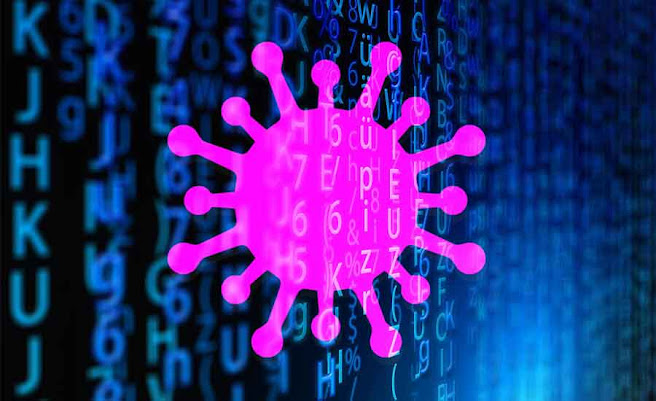A Watershed in Cybersecurity: The Melissa Virus
First Off
Many Americans were still unfamiliar with computer viruses twenty years ago, as was the public's knowledge of the methods employed to unleash them. That would change dramatically with one attack, though. A turning point in the history of cybersecurity was reached when the Melissa virus surfaced in late March of 1999.Melissa's Origin Story

How Melissa Worked
The Melissa virus operated through a combination of social engineering and technical exploitation. When a user opened the infected Word document, a macro written in Visual Basic for Applications (VBA) executed automatically if macros were enabled. This macro would:
- Infect the User’s Computer: It copied itself into the Word application.
- Hijack Microsoft Outlook: The virus would then send an email with the infected attachment to the first 50 addresses in the user’s Microsoft Outlook address book.
The email, with subject lines like “Important Message From [sender's name],” contained messages that urged recipients to open the attachment with phrases like “Here is the document you requested ... don’t show anyone else ;-)”. This clever use of social engineering ensured a high open rate, allowing the virus to spread rapidly.
Melissa's Effect
Despite not being intended to steal money or information, the Melissa virus nevertheless caused a great deal of disturbance. More than 300 businesses and governmental organizations throughout the world experienced email server overload, forcing some—like Microsoft—to completely shut down. One million email accounts were affected, and in certain places, Internet traffic came to a complete stop. The anticipated total damage, which included the cost of cleaning up and repairing the impacted computer systems, was $80 million.
Reaction and Limitation
Experts in cybersecurity swiftly organized to stop the virus's spread. Though it took some time to completely eradicate the infections, they were able to mostly restore the operation of their networks within a few days. By alerting the public to the virus and minimizing its devastating effects, the FBI played a critical role in reducing public awareness of the attack.
Locating the Offender
It wasn't hard to find Melissa's creator. The FBI, New Jersey law enforcement, and other partners worked together seamlessly to trace the electronic fingerprints of the virus to David Lee Smith, thanks to a tip from an AOL representative. On April 1, 1999, he was taken into custody in northeastern New Jersey. Smith entered a guilty plea in December 1999, and in May 2002, he was given a sentence of 20 months in federal prison and a $5,000 fine. Additionally, he consented to work with state and federal authorities.
Melissa's Legacy
For many Americans, the Melissa virus—which at the time was thought to be the fastest-spreading infection—was a harsh awakening to the murky side of the internet. The risk of opening unsolicited email attachments became more widely known, as did the existence of internet viruses and the harm they may cause.
Melissa led to improvements in online security, much as the Morris worm that had occurred a little over ten years before. It also sparked a flurry of even more expensive and destructive cyberattacks. Melissa served as an alert for the FBI and its allies about a serious nascent threat and the urgency of swiftly enhancing cyber capabilities and collaborations.
Establishment of the FBI's Cyber Division
A few months after Smith was sentenced, the FBI established its new national Cyber Division, focused exclusively on online crimes. This division had resources and programs devoted to protecting America’s electronic networks from harm. With nearly everything in our society now connected to the Internet, that cyber mission has become more crucial than ever.
Detailed Examination of Melissa's Operation
David L. Smith’s creation of the Melissa virus was initially intended as a harmless prank but quickly turned into a nightmare for many. The virus spread primarily through email, using Microsoft Outlook to propagate. The infected email urged recipients to open an attached Word document, which then executed a macro script if macros were enabled in Word.
Once the macro executed, it would infect the user’s computer by copying itself into the Word application and checking the first 50 entries in the user's Microsoft Outlook address book. The virus would then send an email with the same infected attachment to these 50 contacts, further spreading the virus.
The Social Engineering Component
The success of the Melissa virus was partly due to its effective use of social engineering. The virus exploited human curiosity and the promise of adult content to entice users to open the infected attachment. The emails appeared to come from trusted contacts, increasing the likelihood of the recipients opening the attachment.
Repercussions and Legal Action
On April 1, 1999, David L. Smith was taken into custody and accused of inflicting damages totaling more than $80 million. His cooperation with the police and identification of additional virus writers resulted in a comparatively light sentence of five thousand dollars in fines and twenty months in federal prison.
What I Can Learn From Melissa
The Melissa virus brought to light the risks associated with macro infections and the necessity for enhanced email security. It underlined how crucial it is to inform users about the dangers of opening email attachments from unidentified senders. Antivirus software has advanced as a result of the occurrence, and new threats are responded to more quickly.
The Melissa Virus in Popular Culture
The Melissa virus has been referenced in various forms of media, including podcasts and articles, highlighting its impact on the history of cybersecurity. It is remembered not just for the damage it caused but for the lessons it taught and the changes it prompted in how we approach cybersecurity.










Comments
Post a Comment